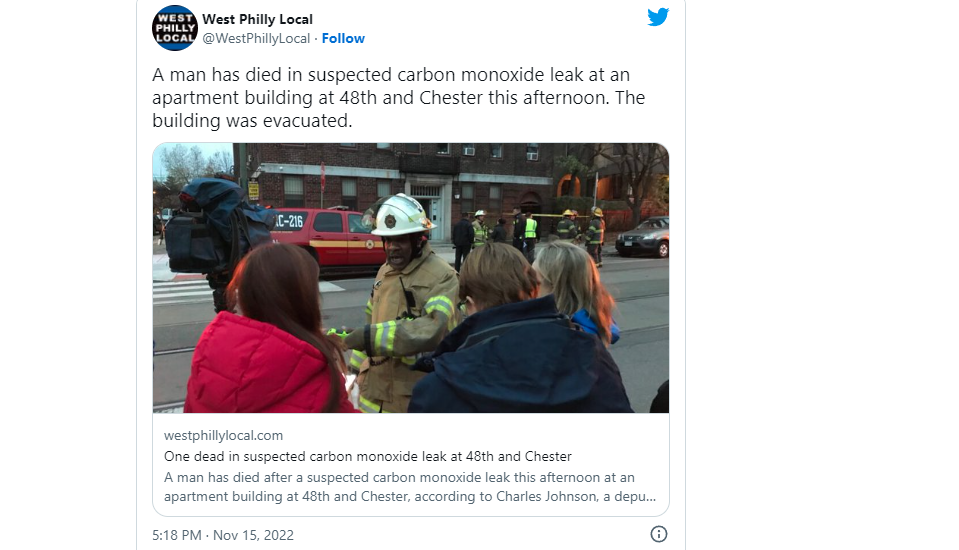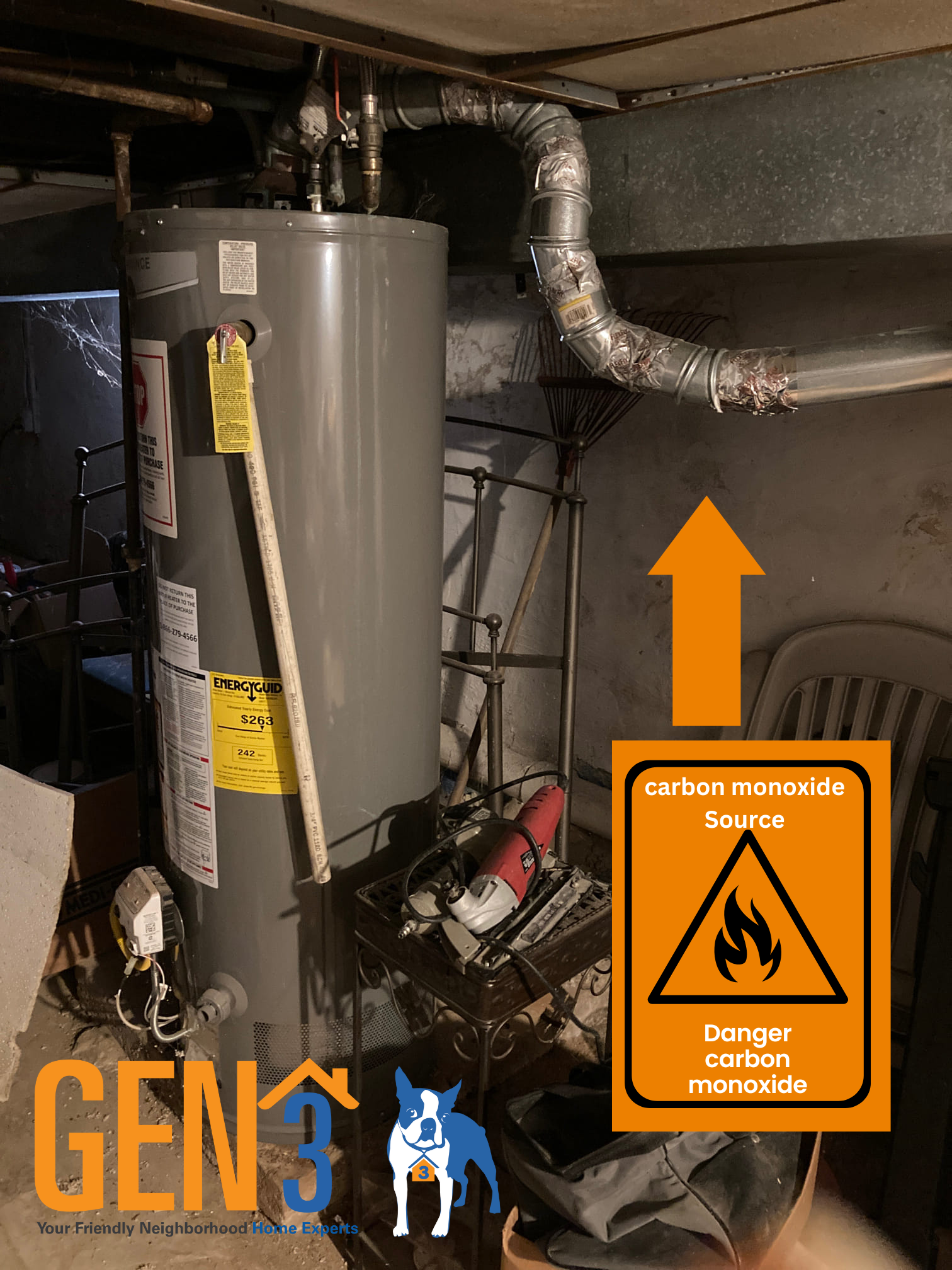
The tragic incident of carbon monoxide poisoning in West Philadelphia is a wake-up call for all of us to be aware and protect ourselves from potential danger. Later that same week, one of our technicians found an old water heater with dangerous exhaust pipes right before he started his shift – this example shows how these types tragedy happen often without warning!
The following information about CO proceeds threats will help you stay safe throughout your home:
- Each year, at least 430 people in the U.S. die from accidental carbon monoxide (CO) poisoning.
- Furnaces, water heaters, ovens, barbecue grills, and vehicle exhaust are some of the most common sources that produce carbon monoxide, which is a byproduct of heat generation.
- CO poisoning symptoms can appear within a few hours and include a dull headache, dizziness, weakness, nausea, and fatigue. With severe exposure, symptoms will be more intense and can include vomiting, confusion, shortness of breath chest pain loss of consciousness, and even death.
- To prevent CO poisoning install carbon monoxide detectors in each hallway near bedrooms.
- Replace Co detectors every 6 years as required by manufactures instruction.
- Do not leave the motor running in a vehicle parked in an enclosed or partially enclosed space.
- Only use fuel-burning appliances as intended.
- don’t use unvented kerosene or gas space heaters in the home
- never use grills indoors or in poorly ventilated areas
- check for blockages and cracking in chimney flues and vents regularly.
- If suspect exposure to carbon monoxide, exit the building or car immediately and breathe in fresh air. Then, call 911 or proceed to the emergency department.
It is crucial for homeowners to have working carbon monoxide detectors when using gas appliances. Additionally, detectors should be tested every month and replaced every 6 years. Moreover, all gas appliances should be vented properly, and chimneys should be kept clean and free of debris.
If you have any questions or concerns GEN3 Electric and HVAC help. These are preventable tragedies.





